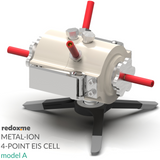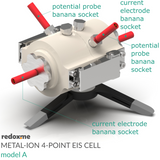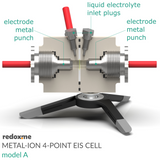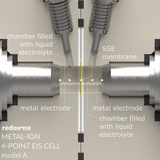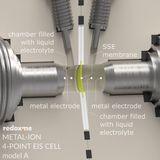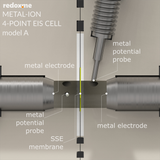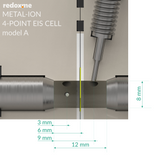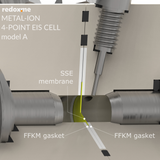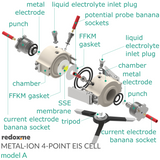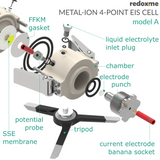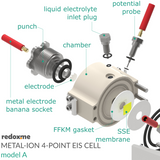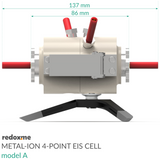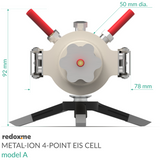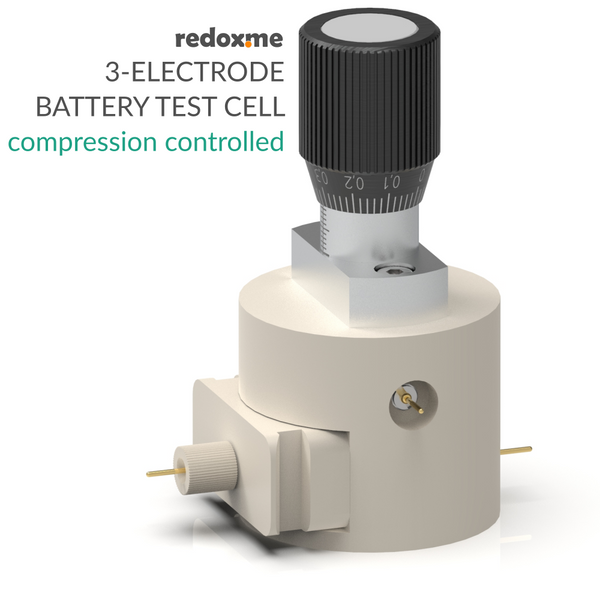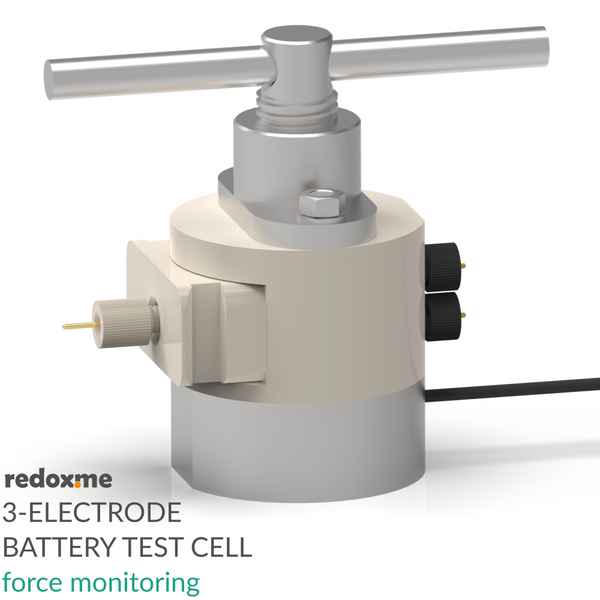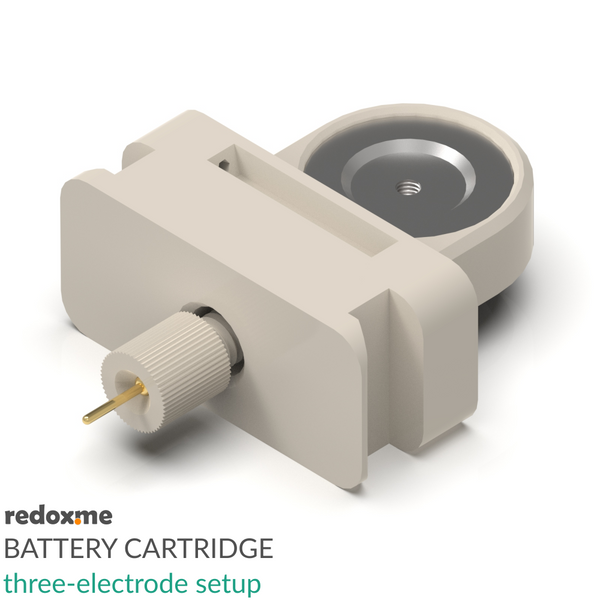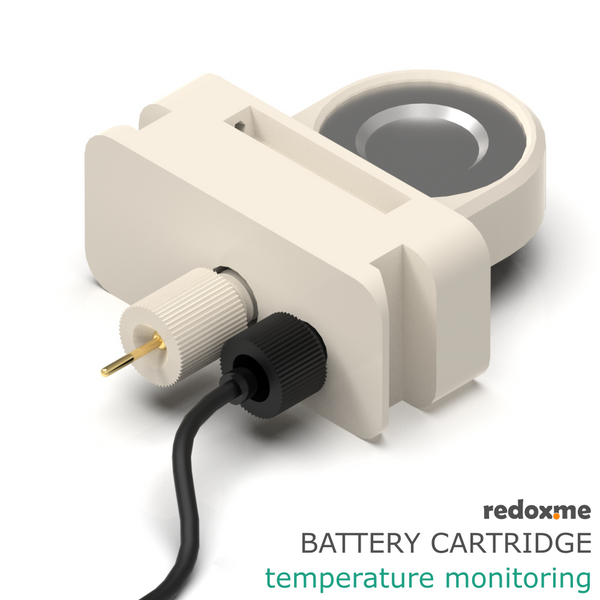Metal-ion 4-point EIS, model A – Metal-ion 4-point Electrochemical Impedance Spectroscopy Cell, model A
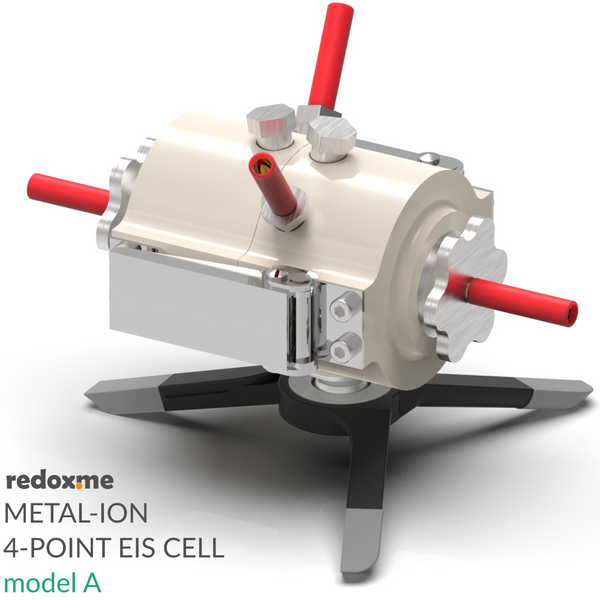
This 4-point Electrochemical Impedance Spectroscopy (EIS) Cell is designed to study ion transfer across phase boundaries of solid and liquid electrolytes in metal-ion systems (Lithium, Sodium and Potassium). It is a stationary solution cell with punch-like current collectors/contacts for both current electrodes and potential probes. It is suitable for carrying out measurements in both 2- and 4-point configurations, having different cell constant value in each case. The current electrodes are mounted from the sides of the cell with a distance of 12 mm between each other, while having a solid-state electrolyte (SSE) laterally installed in the middle of that distance. Potential probes are installed in the middle of the distance between current electrode and SSE. Both compartments are filled with liquid electrolyte (LD). The SSE membrane is installed in between two FFKM gaskets that serve as a gentle mechanical support for the membrane and prevent a liquid bridge between the cell compartments. The cell elements are constructed with materials that are inert to the studied material system (PEEK body and Stainless Steel 316L current collectors/contacts). It well fits organic solvent (FFKM O-Rings) electrolyte requirements. The construction is liquid- and gas-tight due to the double O-Ring seal at each joint.
Application note
Metal-ion 4-point EIS is typically used to study solid-liquid electrolyte interphase in metal-ion batteries. The assembling of the cell must take place inside the glove box filled up with an inert gas. This requirement is due to the instability of Lithium, Sodium and Potassium in ambient atmosphere. However, the measurements may be carried out inside or outside the glove box. Liquid electrolyte should be inserted into the cell using a syringe with a long needle reaching the bottom of the chamber. The removal of the electrolyte from the cell should be handled the same way. Metallic Lithium, Sodium and Potassium electrodes are not included in this setup and should be arranged from elsewhere. The recommended foil thickness is 1.5 mm.
Specification
distance between current electrodes: 12 mm
distance between potential probes: 6 mm
current electrode geometrical surface area: 50.25 mm2
current electrode punch diameter: 8 mm
potential probe geometrical surface area: 0.5 mm2
potential probe punch diameter: 0.8 mm
total volume of liquid electrolyte needed: ~1.1 mL
Intrastat data
HS Code: 90309000
Country of Origin: Sweden
NET weight: 300g
Product includes
2 x PEEK chamber
2 x current electrode punch
2 x potential probe punch
1 x set of FFKM O-Rings
1 x set of FFKM gaskets
1 x tripod
Related products
Ion-exchange and nanoporous membranes
In order to familiarize yourself with an experiment on solid-liquid electrolyte interphase and data analysis of 4-point EIS technique, we recommend the following great articles:
The above mentioned authors greatly contributed to this product development.

